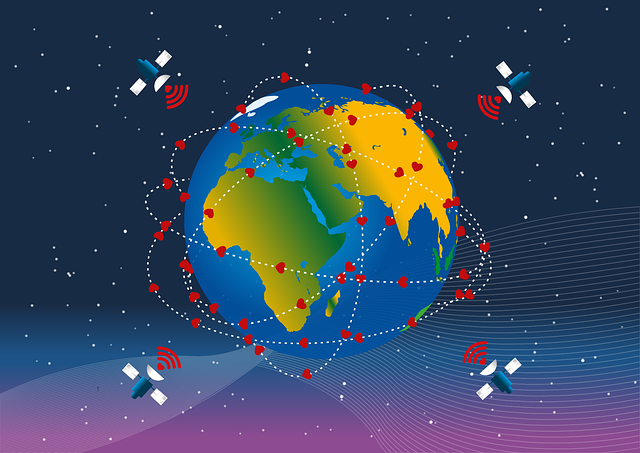In today’s digitally driven world, access to the internet has become a fundamental necessity. It is a gateway to information, education, healthcare, economic opportunities, and so much more. However, while urban areas around the globe are increasingly enjoying high-speed, reliable internet connectivity, many hard-to-reach regions are still left disconnected. This digital divide has far-reaching consequences, limiting the potential for education, healthcare, and economic development in these underserved areas.
But there is hope on the horizon. Starlink, a satellite internet technology provided by SpaceX, is emerging as a powerful tool to bridge this gap and transform connectivity in remote and isolated regions.
Satellite Internet Technology: The Game Changer
Satellite internet technology involves the use of orbiting satellites to provide internet access to remote and rural areas. It works by transmitting data signals between a user’s satellite dish and a geostationary satellite in space. This satellite then relays the data to a network operations center on the ground, which is connected to the internet backbone.
Overcoming Geographical Barriers
One of the most significant advantages of satellite internet technology is its ability to transcend geographical barriers. It doesn’t rely on the extensive terrestrial infrastructure that is required for traditional cable-based internet. This makes it particularly well-suited for connecting regions where laying cables or fiber optics is impractical or cost-prohibitive.
In many hard-to-reach regions, such as remote villages in Africa or the rugged terrains of Alaska, satellite internet is becoming a lifeline. It’s often the only means of connecting to the digital world, enabling these areas to access information and resources that were previously beyond their reach.
Opportunities for Education
Education is a fundamental pillar of human development, and access to the internet can be a game-changer for students in remote areas. Satellite internet technology is opening up new opportunities for education in the following ways:
1. E-Learning Platforms
Satellite internet allows students in remote regions to access e-learning platforms, virtual classrooms, and educational resources. This helps bridge the educational gap, providing them with the same quality of education as their urban counterparts.
2. Access to Online Libraries
Satellite internet provides access to digital libraries and online resources, allowing students to conduct research, access reference materials, and expand their knowledge base, regardless of their geographical location.
3. Virtual Exchange Programs
Students can participate in virtual exchange programs, interacting with peers from around the world. This exposure broadens their horizons and offers valuable cross-cultural experiences.
Transforming Healthcare
Access to quality healthcare is a pressing issue in many remote regions. Satellite internet is playing a vital role in transforming healthcare by:
1. Telemedicine
Telemedicine relies on a stable and high-speed internet connection. Satellite technology allows healthcare professionals to provide remote consultations, monitor patients, and even perform surgeries from a distance.
2. Medical Training
Satellite internet facilitates online medical training and continuing education for healthcare workers in remote areas, ensuring that they stay updated on the latest medical advancements and practices.
3. Medical Records Management
Digital health records can be securely managed and accessed through the internet, improving patient care and coordination among healthcare facilities, even in distant regions.
Fostering Economic Development
Internet connectivity is a catalyst for economic growth. Satellite internet technology is fostering economic development in hard-to-reach regions in the following ways:
- 1. E-Commerce and Online Marketplaces
- Local businesses can access a global customer base through e-commerce and online marketplaces, boosting sales and economic opportunities.
- 2. Agriculture and Rural Enterprises
- Farmers and rural entrepreneurs can access market information, weather forecasts, and best practices for crop management, leading to increased agricultural productivity.
- 3. Remote Work Opportunities
- Satellite internet enables individuals to work remotely and tap into job opportunities from around the world. This reduces the economic disparity between urban and rural areas.
Challenges and Considerations
While satellite internet technology offers immense promise, it is not without its challenges. The high cost of equipment, latency issues, and bandwidth limitations are some of the obstacles that need to be addressed. Additionally, regulatory and policy challenges may affect the expansion of satellite internet services in some regions.
Governments, non-governmental organizations, and private companies must collaborate to address these challenges and ensure that satellite internet technology reaches its full potential in connecting hard-to-reach regions.
In conclusion, satellite internet technology is revolutionizing connectivity in remote and isolated areas, offering new opportunities for education, healthcare, and economic development. By leveraging the power of satellites, we can bridge the digital divide, ensuring that everyone, regardless of their location, has access to the resources and opportunities the internet has to offer. This transformative technology is not only connecting the unconnected but also paving the way for a brighter future for these underserved regions.

